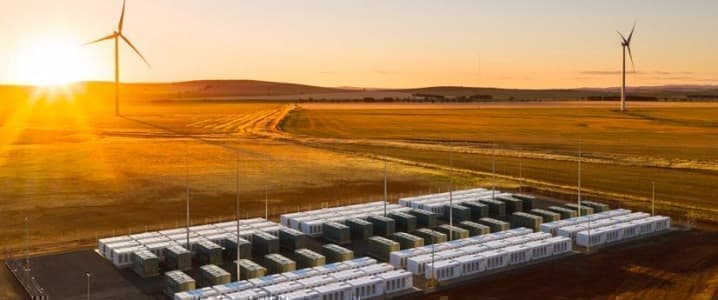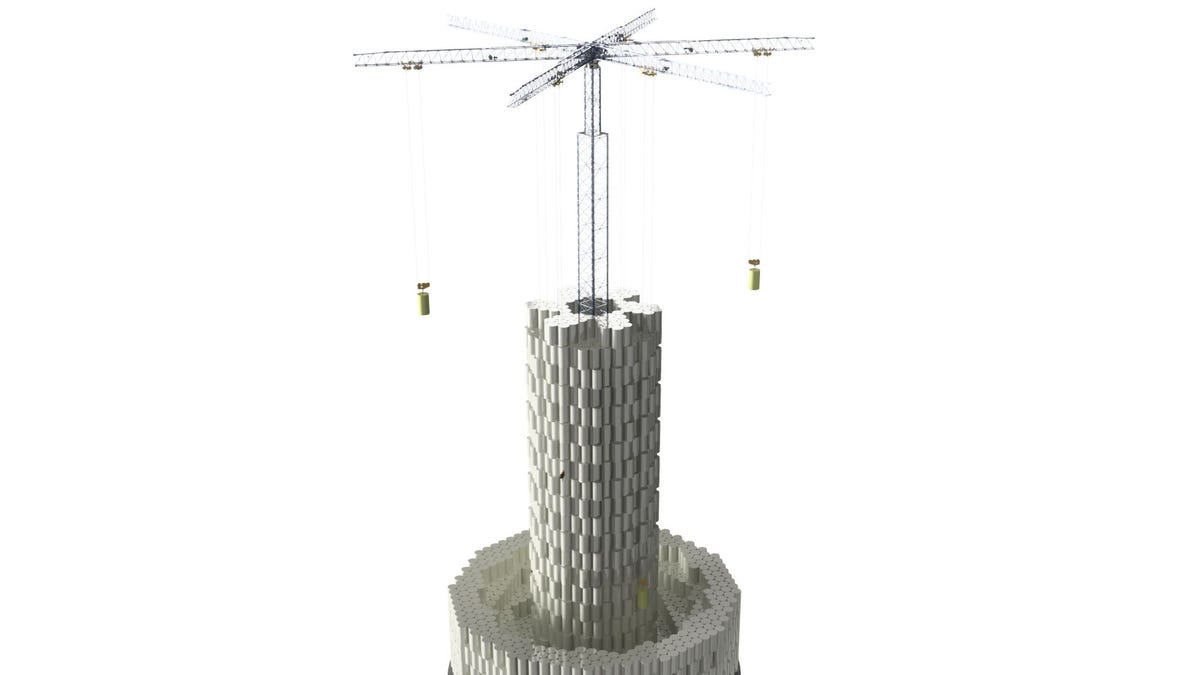I suppose energy storage facilities like pumping water or raising rail cars uphill - does not have to be incredibly efficient as long as it can effectively take up the energy that is produced erratically from green sources. What is lacking in efficiency is made up for in cheapness and simplicity - pumping water uphill is not high tech. (It’s what many small towns have done with water towers in lieu of continuous water pressure pumps)
To rehash pedantics - a cell is one unit that produces energy from an electrochemical reaction. Battery as I understand, has its roots in the same concept of a battery of cannons… it is several (but can be one) installed together to be used together for the desired effect. Since most electrochemical reactions are limited to the electrochemical properties of the components, from 3.6V for lithium to 2V for lead acid to 1.5V for carbon and alkaline and 1.2V for NiMH - creating a battery of one or more cells is necessary to produce decent voltage.
Another cause for grid frequency unreliability is excessive load draw, or when a power plant goes offline creating the same effect. What battery farms can do is react within milliseconds to compensate for excessive draw or low supply on the grid, so yes, it’s all about stability. If a natural gas (or worse, coal) power plant is the replacement power source for the grid, it needs warning time or else there’s a wait to power up. During this time, on deregulated grids, the demand price could peak high. The battery farm prevents this, bringing stability to supply, frequency, and price. Win, win, win. (Assuming anyone considers deregulation of a necessity a “win”).
Recall that Enron’s clever marketing ploy was to take California generators offline, creating that excessive draw to profit from remaining plants. I heard about one smelter in Washington or Oregon who found it more profitable to shut down, send their employees home and resell their guaranteed power allotment south.
Tesla recently announced their new batteries were “tab-less”. A typical cylindrical battery like theirs is made from a long sandwich sheet of electrolyte between anode and cathode materials. This is then rolled up into a cylinder. The anode and cathode sheets would have metal tabs every so often along those sheets (anode tabs on top edge, cathode along bottom edge) In the rolled up battery (cell) these would be folded over to produce a metal top and bottom of the cylinder that were the contacts for the current in and out. Having a tab, say, every two inches or so along the sheet of -ode means current goes in there and spreads out to the nearby areas of the cell’s anode of cathode, so the joint from tab to anode/cathode sheet is a bit of a current bottleneck. . A simple and non-tech innovation was to make the tabs continuous along the sheets (basically - more, more, more), so there is no bottleneck point for current flow - no heat or resistance issues to limit current flow, so batteries (cells) can safely be charged much faster.
Fun fact - the electrolyte often is oil based, which is why overheating batteries can cause interesting fires. There’s research into dry electrolyte batteries, which would make the cells lighter and safer.
The other way to look at batteries - absent a catastrophic thermal failure, batteries when they are “worn out” still contain the material they were made with. Any lithium, nickel, etc. are still in the battery, unlike combustion engines, where the means of providing power is regularly dispersed to the environment. The only question is how much energy is needed to undo chemical bonds produced in the batteries and refine the contents into useable materials.





